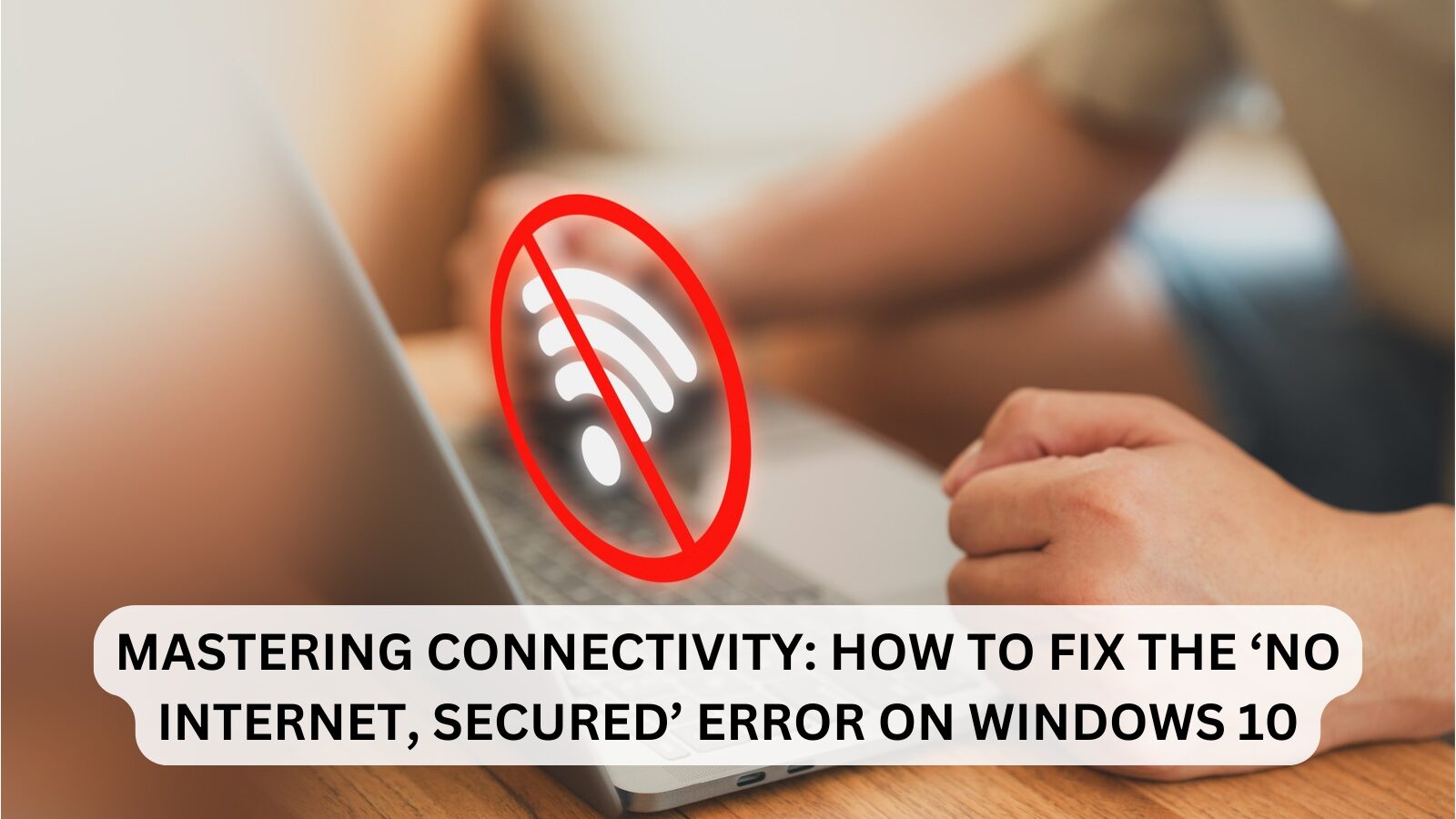Many people upgrade to Windows 10 and encounter WiFi connectivity issues. Your internet might become slow, or your computer won’t connect to WiFi at all. If you’re facing the latter, you’ll see the “No Internet, Secured” message next to your WiFi network in the taskbar.
This article will show you how to fix the “No Internet, Secured” error by troubleshooting common causes. This issue often arises after a Windows 10 update or due to incorrect system configurations. Keep reading to learn quick and easy fixes—you can solve this problem in under five minutes!
Here’s your SEO-optimized version with bold keywords while keeping the meaning intact:
What is the “No Internet, Secured” Error?
Why Does Windows 10 Say “No Internet, Secured”?
Are you seeing “No Internet, Secured” in the taskbar or receiving a notification on your device, wondering what it means? Let’s break it down.
This Windows 10 error is often vague but typically indicates that your WiFi network or internet connection is down or unreachable. You may also experience this issue when your device is connected to the network but can’t access the internet.
While this problem is commonly reported on Microsoft Surface devices, it can affect any Windows 10 PC or laptop. Symptoms include:
- Your device is connected to WiFi, Ethernet, or a mobile hotspot but still shows the “No Internet, Secured” message.
- The error appears next to TP-Link, Netgear, or other network devices after connecting.
- You can’t access the internet on your Windows 10 computer or laptop.
How to Fix the “No Internet, Secured” Issue
Let’s dive into the solutions so you can restore your internet connection and get back online quickly! Below is a detailed troubleshooting guide to help you resolve this frustrating error on your Windows 10 PC or laptop.
How to Fix the “No Internet, Secured” Error in Windows 10
If you’re facing the “No Internet, Secured” issue, try these effective troubleshooting steps to restore your WiFi connection:
- ✅ Disable your VPN
- ✅ Refresh your Windows 10 IP configuration
- ✅ Reset Winsock to fix network settings
- ✅ Check your PC’s connection properties
- ✅ Disable IPv6 to resolve compatibility issues
- ✅ Set a new DNS server for a more stable connection
- ✅ Update your network device driver to fix potential bugs
- ✅ Run the Network Troubleshooter in Windows 10
Now, let’s dive into each step and explain how to get your internet working again in just a few minutes!
Solved: “No Internet, Secured” Error on Windows 10
If you’re experiencing the “No Internet, Secured” issue on your Windows 10 PC, it may be due to recent updates, system bugs, or driver problems. We’ve compiled a step-by-step guide to help you fix this issue and restore your internet connection!
Method 1: Reset Your Network Connection
A simple network reset can often resolve this frustrating problem. Follow these steps:
- 1️⃣ Click the Internet icon in your taskbar and select the network showing “No Internet, Secured”.
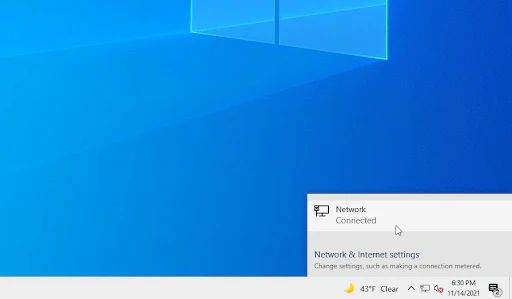
- 2️⃣ If the Forget button is visible, click on it. Otherwise, open Network & Internet settings to find and forget the network.
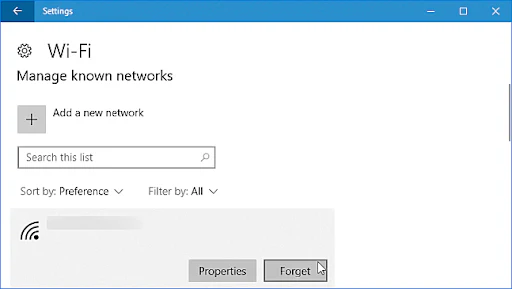
- 3️⃣ If you’re using Ethernet, unplug the cable from your computer. If possible, turn on Airplane Mode and restart your device.
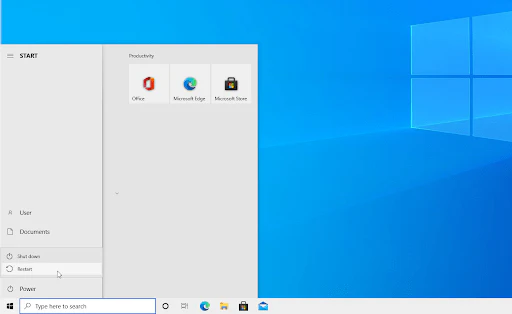
- 4️⃣ After restarting, turn off Airplane Mode and plug your Ethernet cable back in.
- 5️⃣ Reconnect to your network and check if the “No Internet, Secured” message is gone.
If this method doesn’t work, don’t worry! There are more solutions to explore—let’s go through them one by one.
Method 2: Automatically Obtain DNS Details
Your DNS server settings play a crucial role in configuring your network connection. If they are misconfigured, you may experience errors like “No Internet, Secured.” Automatically obtaining DNS details can help resolve this issue. Follow these steps:
- 1️⃣ Press Ctrl + X on your keyboard and click Network Connections from the context menu.
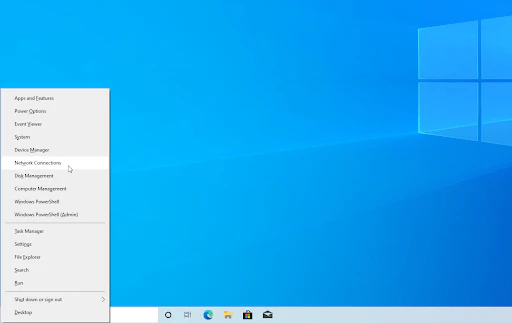
- 2️⃣ Select your current connection type (Wi-Fi or Ethernet) on the left pane, then click Change adapter options on the right.

- 3️⃣ Right-click your active network connection and select Properties.
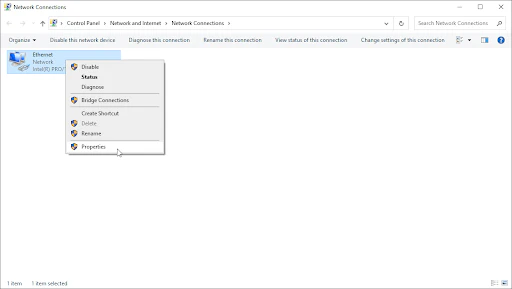
- 4️⃣ Scroll down and locate Internet Protocol Version 4 (TCP/IPv4). If it’s unchecked, enable it by clicking the box, then click Properties.

- 5️⃣ Ensure both “Obtain an IP address automatically” and “Obtain DNS server address automatically” are selected. This allows your system to find the correct, working DNS server automatically.

- 6️⃣ Click OK and restart your computer.
Once your system boots up, check if your internet connection is restored. If the issue persists, proceed to the next method for further troubleshooting!
Method 3: Set a New DNS Server
If automatically obtaining DNS details didn’t work, manually setting a public DNS server might fix the “No Internet, Secured” error. Follow these steps to configure a new DNS:
1️⃣ Open Network Connections:
Press Ctrl + X and select Network Connections from the menu.
Choose your connection type (Wi-Fi or Ethernet) and click Change adapter options on the right.
2️⃣ Access Adapter Properties:
Right-click your active network connection and select Properties.
Scroll down and find Internet Protocol Version 4 (TCP/IPv4). If it’s unchecked, enable it and click Properties.
3️⃣ Set a Custom DNS Server:
Select “Use the following DNS server addresses” and enter one of these options:
Cloudflare DNS: 1.1.1.1 (Preferred) and 1.0.0.1 (Alternate) – Fast and privacy-focused.
Google DNS: 8.8.8.8 (Preferred) and 8.8.4.4 (Alternate) – Reliable and widely used.
OpenDNS: 208.67.222.123 (Preferred) and 208.67.220.123 (Alternate) – Good for security filtering.
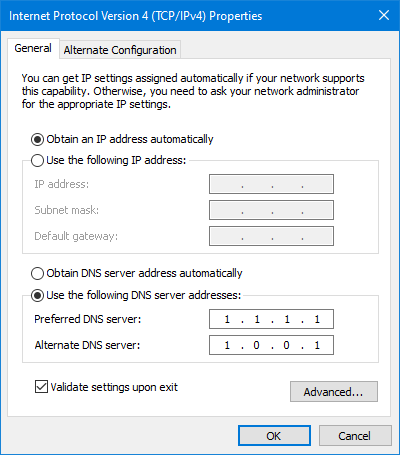
4️⃣ Apply the Changes:
Check “Validate settings upon exit” to test the connection without restarting.
Otherwise, click OK, reboot your computer, and check if your internet connection is restored.
If this solution doesn’t resolve the issue, proceed to the next troubleshooting method!
Method 4: Disable Internet Protocol Version 6 (IPv6)
If you’re facing Wi-Fi or Ethernet connectivity issues, it could be due to IPv6 being enabled on your Windows 10 system. Disabling IPv6 may help resolve the “No Internet, Secured” error. Here’s how to turn it off:
1️⃣ Open Network Connections:
- Press Ctrl + X and select Network Connections from the menu.
- Choose your connection type (Wi-Fi or Ethernet) and click Change adapter options on the right.
2️⃣ Access Adapter Properties:
- Right-click your active network connection and select Properties.
- Scroll down and locate Internet Protocol Version 6 (TCP/IPv6).
3️⃣ Disable IPv6:
- If IPv6 is enabled (box is checked), click the box once to disable it.
- If the box is already unchecked, IPv6 is not enabled, and no action is needed.
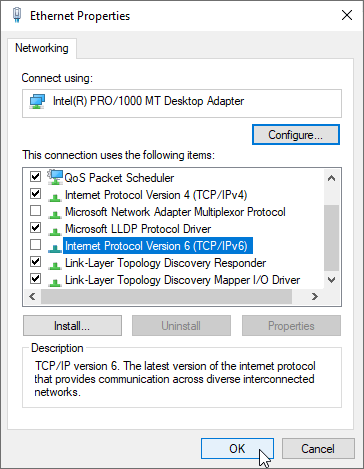
4️⃣ Apply the Changes:
- Click OK to save the settings.
Once done, check if your internet connection is restored. If not, move on to the next method to troubleshoot further!
Method 5: Reinstall Your Network Adapter
If you’re still experiencing the “No Internet, Secured” error, reinstalling your network adapter might help fix the issue. Follow these steps:
1️⃣ Open Device Manager:
- Press Windows + X on your keyboard and select Device Manager from the menu.
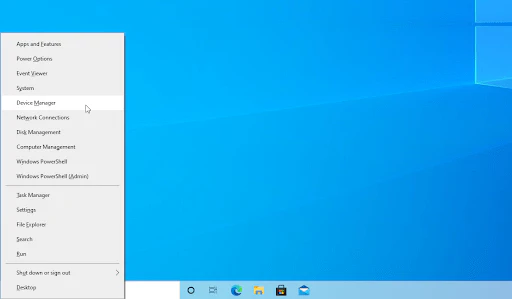
2️⃣ Uninstall Your Network Adapter:
- Expand the Network Adapters section.
- Right-click on your active network adapter and choose Uninstall device.
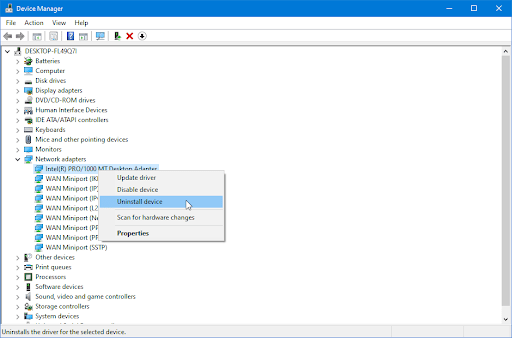
- Click Uninstall to confirm.
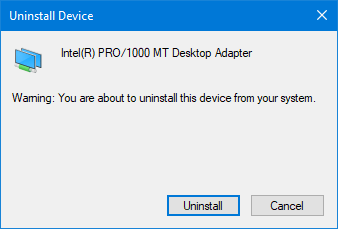
3️⃣ Reinstall the Adapter:
- In the Device Manager toolbar, go to Action > Scan for hardware changes.
- Windows 10 will detect the missing network adapter and automatically reinstall it.
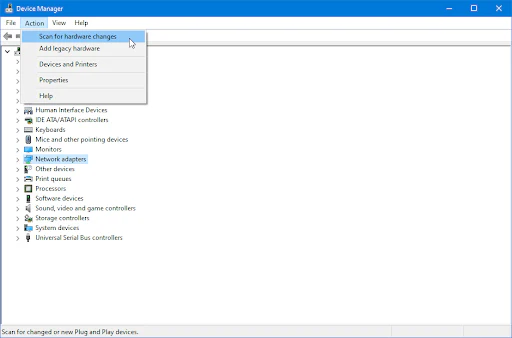
4️⃣ Restart Your Computer:
- Reboot your PC and check if your internet connection is restored.
If the issue persists, continue to the next troubleshooting method!
Method 6: Refresh Your IP Configuration
If you’re experiencing internet connectivity issues, outdated or incorrect DNS and IP settings might be the cause. Refreshing your IP configuration can help fix the “No Internet, Secured” error. Follow these steps:
1️⃣ Open Command Prompt as Administrator:
- Click the search bar (magnifying glass icon) in your taskbar or press Windows + S.
- Type Command Prompt, right-click on it, and select Run as Administrator.
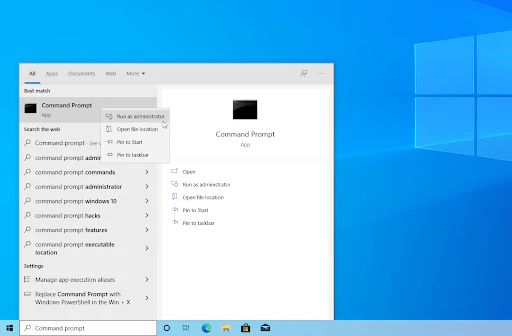
- Click Yes when prompted by User Account Control (UAC).
2️⃣ Enter the Following Commands:
Type each command below and press Enter after each one:
ipconfig /flushdns
ipconfig /registerdns
ipconfig /release
ipconfig /renew 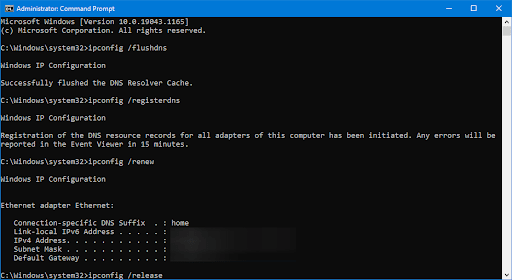
3️⃣ Restart and Test Your Connection:
- Close Command Prompt and restart your computer.
- Check if your internet connection is restored.
If this method doesn’t fix the issue, move on to the next troubleshooting step!
Method 7: Perform a Winsock Reset
If you’re facing persistent internet connectivity issues, a Winsock reset can help resolve the problem by restoring the default settings for the Windows Sockets API. Here’s how to reset it:
1️⃣ Open Command Prompt as Administrator:
- Click the search bar (magnifying glass icon) on your taskbar or press Windows + S.
- Type Command Prompt, right-click on it, and choose Run as Administrator.
- Click Yes when prompted by User Account Control (UAC).
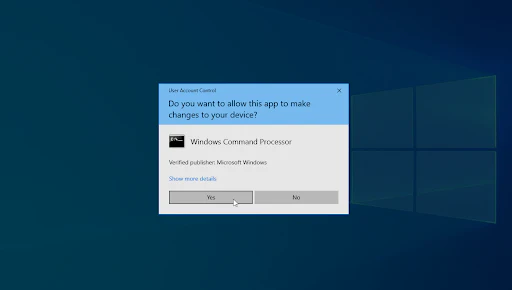
2️⃣ Enter the Following Commands:
Type each command below and press Enter after each one:
netsh int ip set DNS
netsh winsock reset 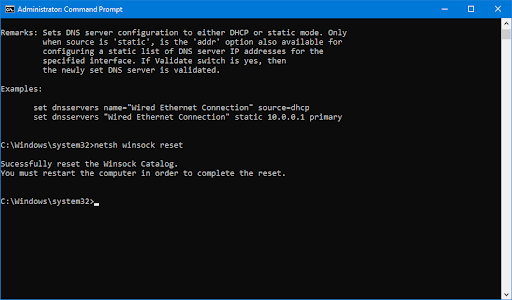
3️⃣ Restart and Test Your Connection:
- Close Command Prompt and restart your computer.
- Check if your internet connection is working and the “No Internet, Secured” message is gone.
If you’re still seeing the error, there are a few more advanced troubleshooting steps to try.
Method 8: Run the Internet Connections Troubleshooter
Microsoft provides built-in troubleshooters to help fix common Windows issues, including network problems like the “No Internet, Secured” error. Here’s how to run the Internet Connections troubleshooter to resolve the issue:
1️⃣ Open Settings:
- Click on the Windows icon in the bottom left corner of your screen to open the Start menu.
- Select Settings or use the shortcut Windows + I.
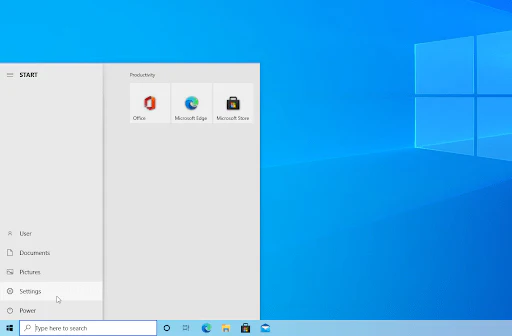
2️⃣ Navigate to Troubleshooters:
- In the Settings window, click on Update & Security.
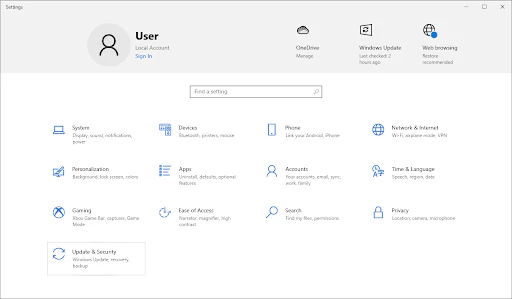
- On the left-hand side, click the Troubleshoot tab.
- Look for the Network Adapter troubleshooter.
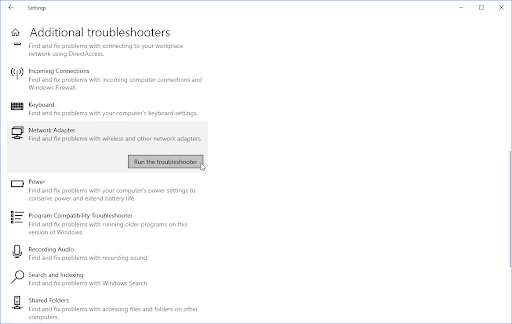
3️⃣ Run the Troubleshooter:
- If you don’t see the Network Adapter troubleshooter, click on Additional troubleshooters and find it there.
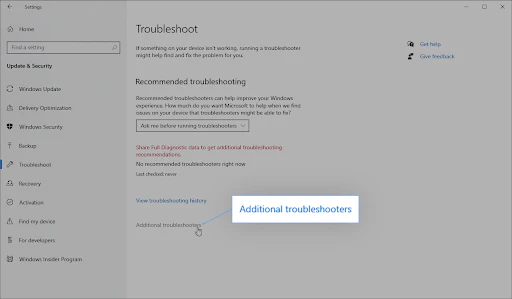
- Click Run the troubleshooter and wait for it to scan your device for any issues.
While the troubleshooter might not always detect the problem, it’s still worth trying. If it doesn’t resolve the issue, our other methods should help fix your internet connection.
Method 9: Update Windows 10 and Your Drivers
Some users have reported that updating Windows 10 and their drivers resolved the “No Internet, Secured” error. By updating, you can also gain access to new features, improved security, and better overall performance. Here’s how to do it:
1️⃣ Open Settings:
- Click the Windows icon in the bottom left of your screen to open the Start menu.
- Select Settings or press Windows + I.
2️⃣ Check for Windows Updates:
- In Settings, click on Update & Security.
- Stay on the Windows Update tab and click on Check for updates.
- If there are updates available, click View all optional updates to see if there are any additional updates to install.
3️⃣ Install the Updates:
- If updates are found, click Install and wait for Windows 10 to download and apply them.
4️⃣ Update Your Drivers:
- After updating Windows, make sure to update your network drivers as well, as outdated drivers can contribute to connectivity issues.
After updating, check if your internet connection is working correctly again!
Final thoughts
We hope that our tips have helped you troubleshoot your WiFi showing “No Internet, secured” instead of connecting.
One more thing
If you’re in search of a software company that embodies integrity and upholds honest business practices, your quest ends here at Ecomkeys.com. As a Microsoft Certified Partner, we prioritize the trust and satisfaction of our customers. Our commitment to delivering reliable software products is unwavering, and our dedication to your experience extends far beyond the point of sale. At Ecomkeys.com, we provide a comprehensive 360-degree support system that accompanies you throughout your software journey. Your trust is our foundation, and we’re here to ensure that every interaction with us is a positive and trustworthy one.

